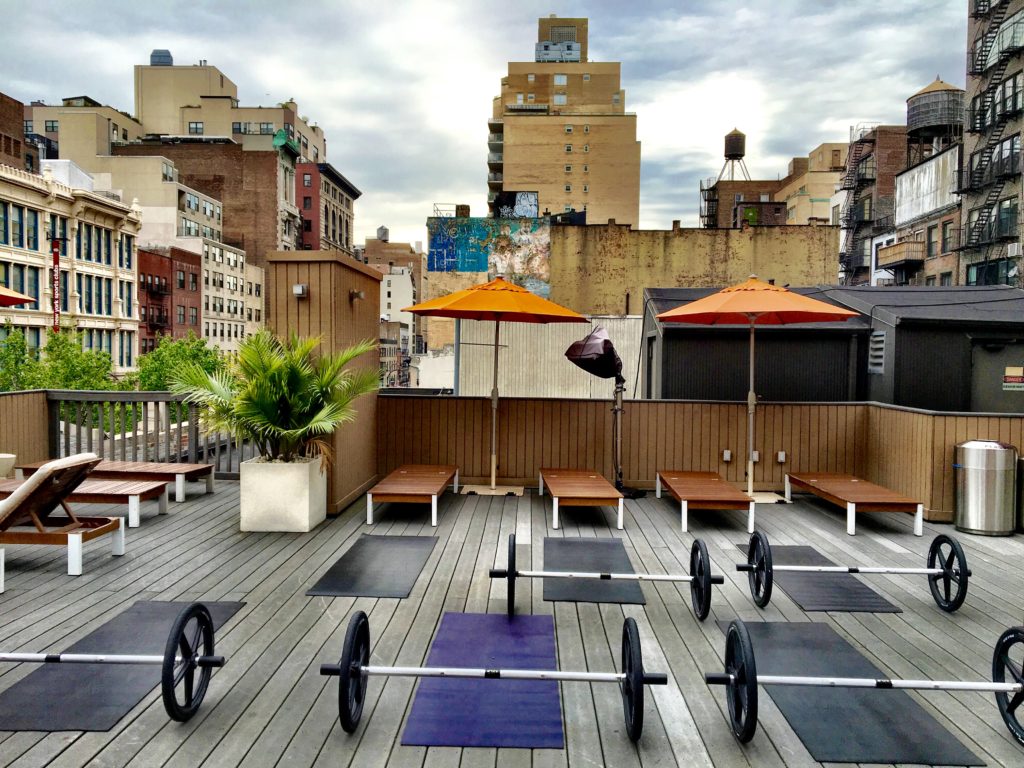Have you ever been strength training an athlete and thought, “Gee, there must be a more effective way to get them to their desired weight lifting goal?”
I, personally, have not had the occasion for this thought, but Andrew Page did. He’d been doing strength and conditioning with athletes for about 10 years when he realized something. You could get just as strong doing lightweight, movement-focused exercises over time as you could lifting heavy weights that isolate different parts of the body. To prepare athletes for heavy lifting, he started encouraging them to lift light but still go hard, just in a more body-holistic manner.

This led to the birth of AXLE, an idea “first written on a napkin in 2014,” said Page. The product looks like a car’s axle (hence the name), an aluminum bar with wheels attached on either end made out of high-grade plastic (the same used to make gun parts). It weighs 11.4 pounds but can take up to 350, and it’s the same size as a regulation barbell, so you can easily fit weights onto the sides (trust me, you don’t need to get a solid workout). While Page and his co-founder, medical professional Anuj Patel, only started marketing the product this past January, summer 2016 saw class after full AXLE class on Manhattan based Clay Health Club’s rooftop.
I arrived at the gym’s roof, just blocks from Union Square, one evening in late September. The class started at 6:30pm, the sun setting not much later, so I attended a class of only four (I suppose it’s less popular to exercise in the dark) led by the founder. This was at once fantastic and terrifying. I both needed the extra attention this small group afforded and was afraid of it because I rarely exercise (save running for the closing door of the subway I take to work every morning).
First off, the weight of the equipment surprised me. Lifting it required almost no effort, but this immediately changed when we tacked on squats, jumps, and lunges. In sets ranging from about eight for the more difficult moves to 20 for the easier ones, we pumped those AXLEs to the beat of current EDM hits (all exercises follow the beat of a soundtrack) until I had to excuse myself to grab water from the gym’s main room downstairs.
Clay Gym, by the way, is home to more than one innovative fitness class. Besides boasting features like a marble chess set and a fireplace, it offers classes with names such as “Fight Club” (I didn’t dare ask).

In spite of it being a new fitness method, it seems like AXLE already has a few converts. Two of my classmates on the rooftop are pictured in various AXLE Instagram photos and teach AXLE classes themselves, some of those classes more dance-focused than others. Though the dance classes sound fun, I think I’d have to work up to them considering my baseline cardio ability. Moving to the beat of music was difficult as a beginner, and I often had to miss a beat or two to get back on track with the rest of the class. Still, Page showed modifications for each set we did so that we could make it as challenging or as…forgiving as we needed.
For example, after squatting with the AXLE and then jumping up while straightening our arms above our heads, instead of then bringing the equipment down the floor and rolling forward into a full push-up, we could simply roll forward into a plank. Though the difference there may not sound dramatic, it was the difference between me being able to keep up and not. Throughout, Page held onto the perfect balance of upbeat energy and down-to-earth explanation—motivation without the unnecessary pep.
Because of the wheels (and my lack of upper body strength) I did worry that the AXLE would roll away from me—but it never did. And though I sweat and paused and modified the moves (and maybe cried silently once), I made it through the workout without injuring myself. I went so far as to embrace the rush of endorphins that flooded my system afterwards, skipping home with my friend who had joined me for the workout against his wishes. He, too, was very happy to have challenged his muscles to this unfamiliar type of movement—and to have done so on a roof in that perfect slice of New York weather that exists in the brief interim between summer and winter. (What’s that called again? Fall?)

Users can deconstruct the AXLE, pulling apart the aluminum bar and separating it from the wheels to stuff it inside a circular case that looks like a drum bag. It’s expected to retail in the $200 to $300 range. To learn more about the workout and check out classes, visit the AXLE website.
